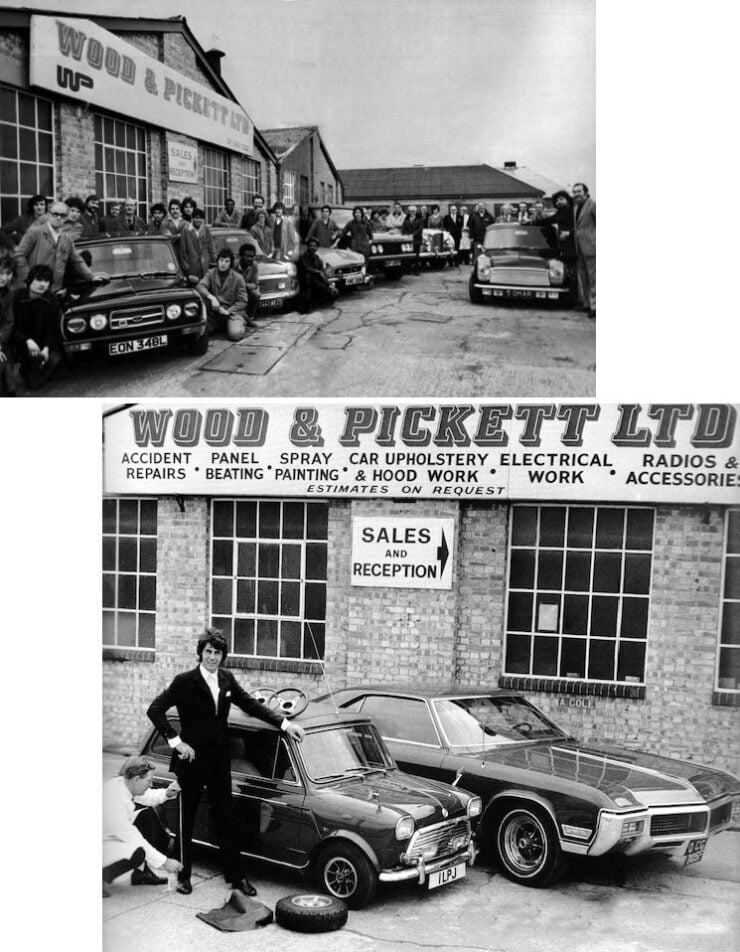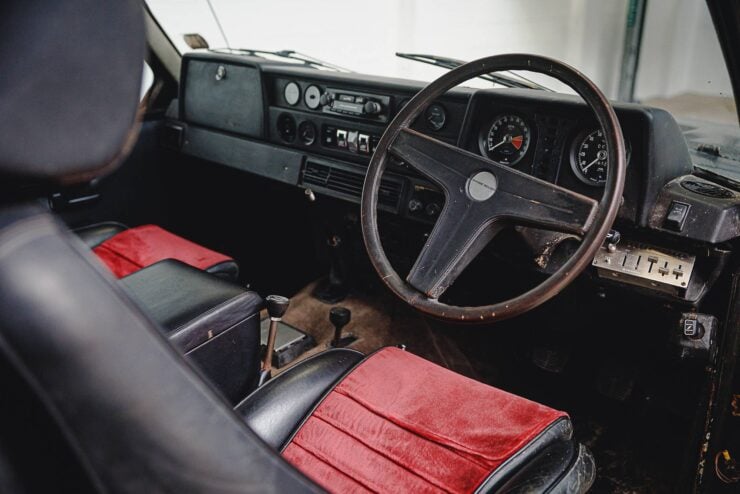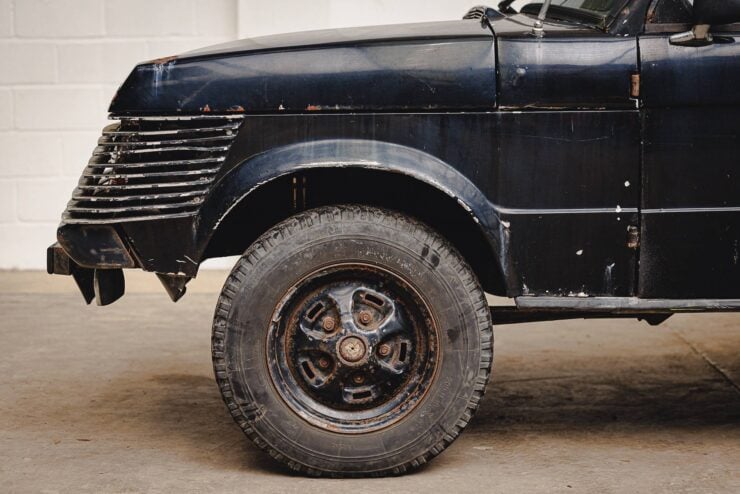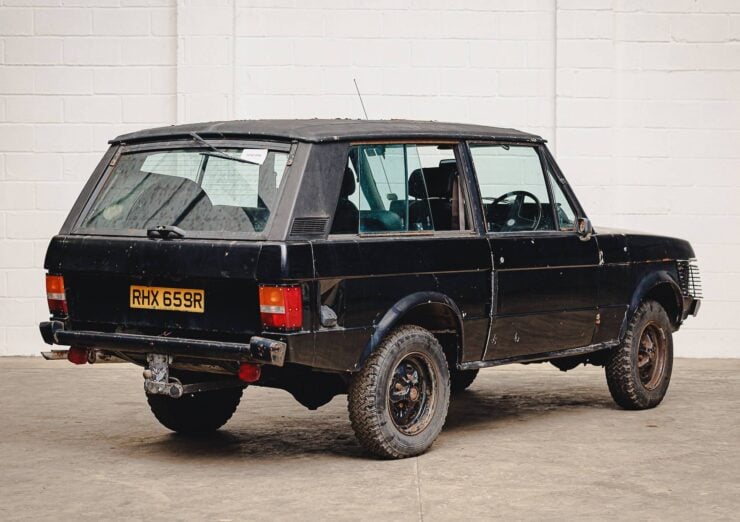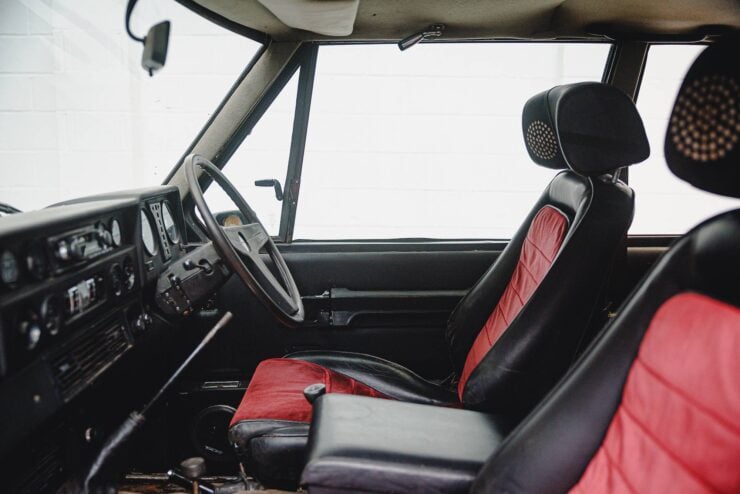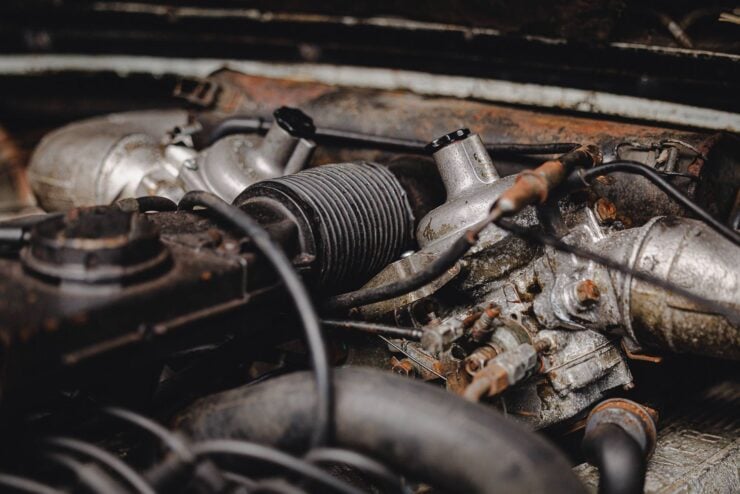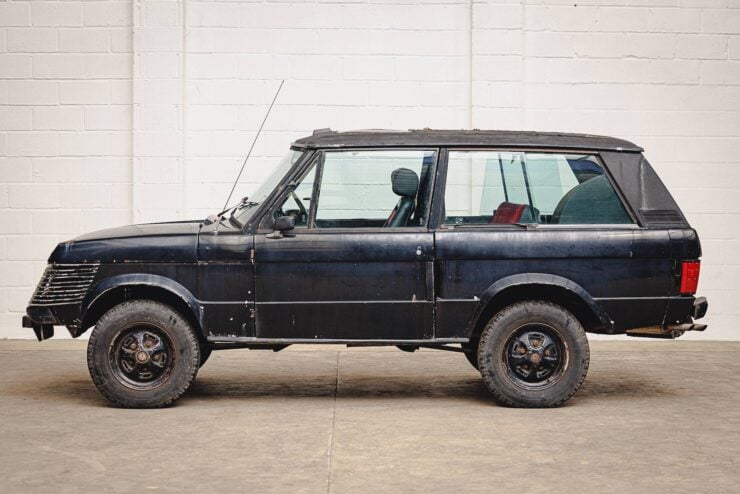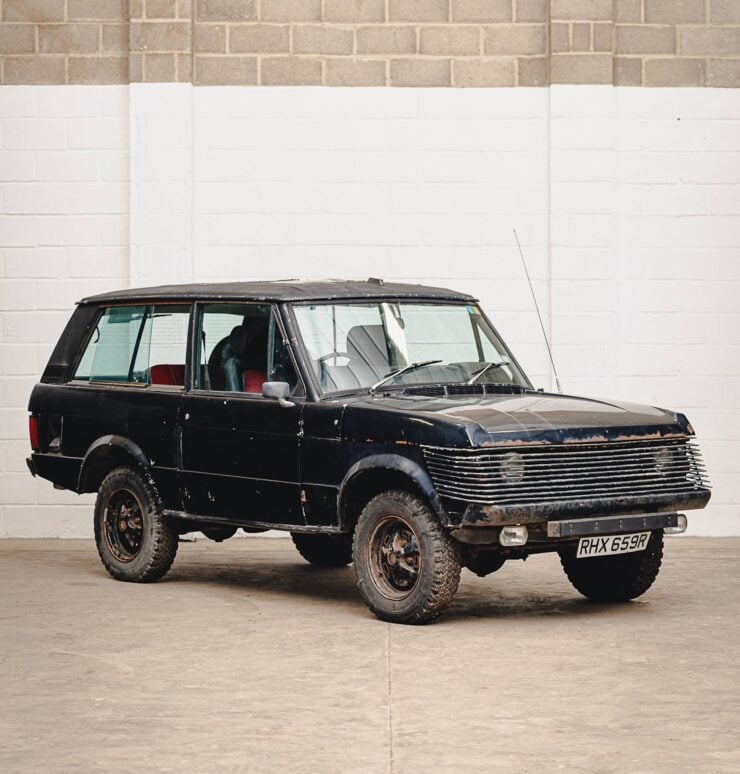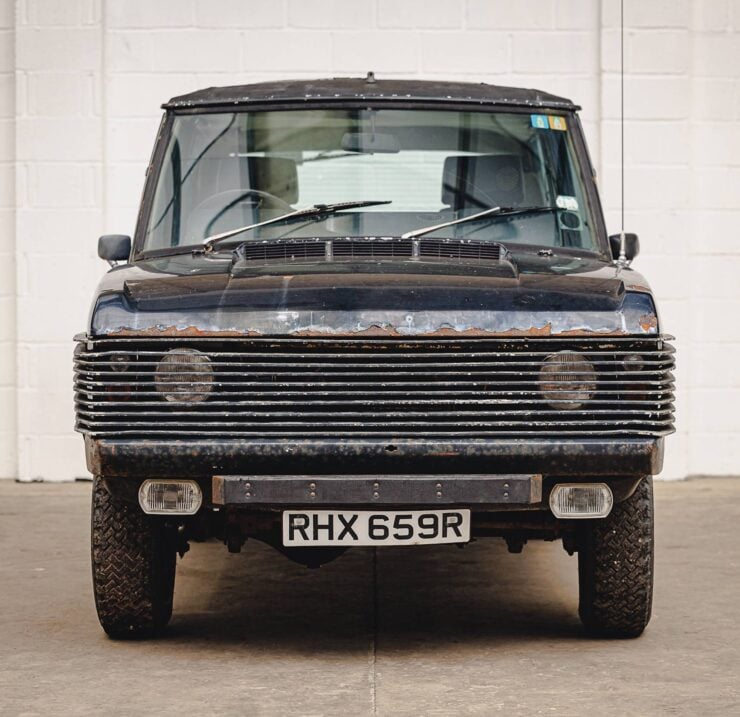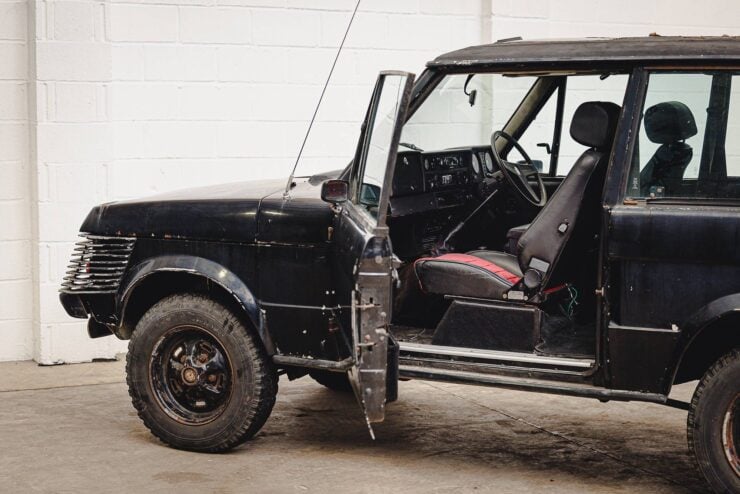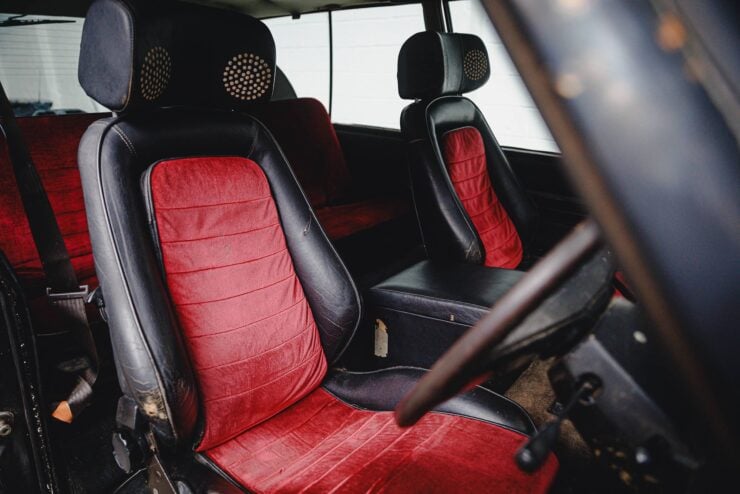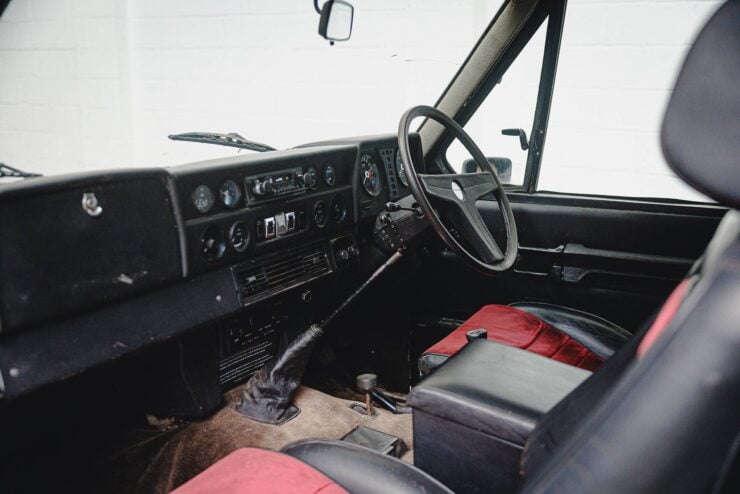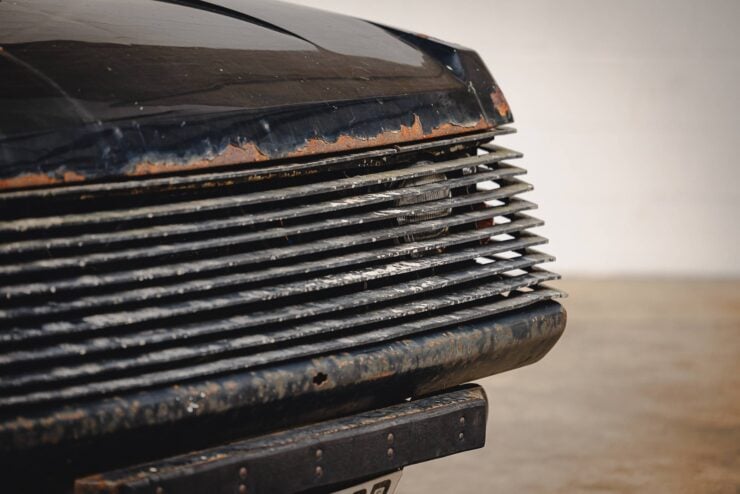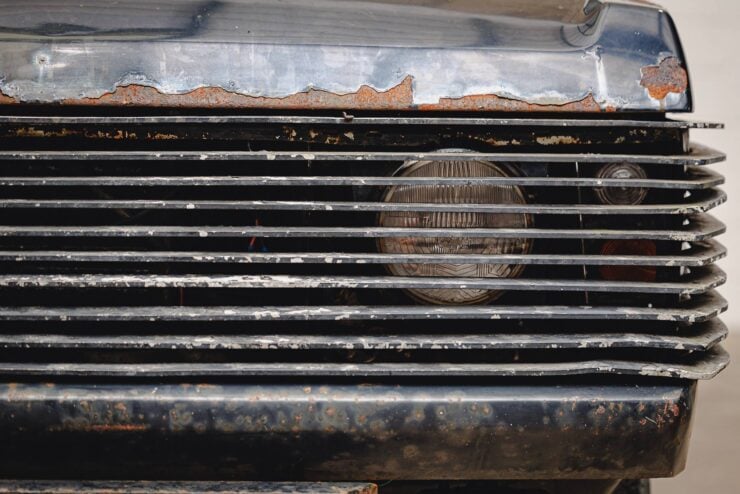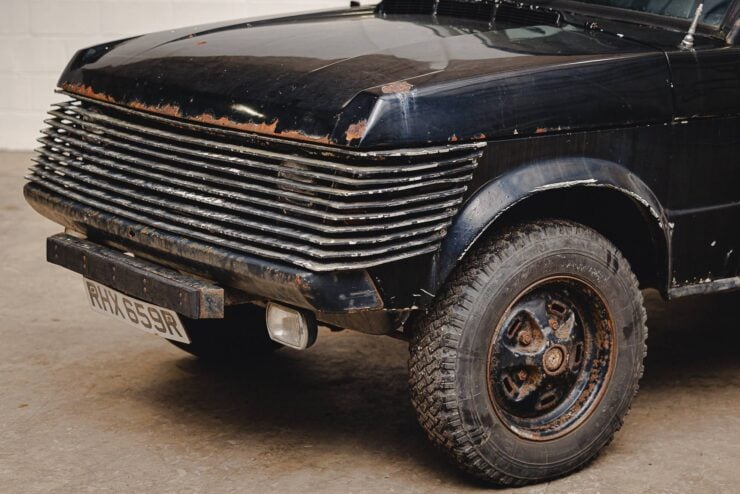This is the 1977 Wood & Pickett Sheer Rover that was owned and driven by legendary comedic actor Peter Sellers. It’s been locked away in a garage for over 40 years, and it’s now being sold for the first time since 1980.
In Sellers’ ownership this “Sheer Rover” was based at his Gstaad address in Switzerland. As an opulently-optioned luxury four-wheel drive it was probably the perfect vehicle for Gstaad – it cost Sellers approximately £160,000 in today’s money.
Fast Facts – The Wood & Pickett “Sheer Rover”
- Wood & Pickett was a luxury coachbuilding firm founded in the Park Royal area of London 1947. Company founders Bill Wood and Les Pickett had worked together at high-end coachbuilding firm Hooper, and decided to go out on their own.
- The two men started out with traditional luxury coachbuilding however the increasing use of unibody automobile construction, rather than frame-on-body, made the lives of coachbuilders more difficult.
- Many coachbuilding companies went out of business, but Bill Wood and Les Pickett cleverly pivoted to providing luxury fitouts of production cars. They became famous for the Mini conversions, but also build custom Range Rovers, Rolls-Royces, and Mercedes.
- The vehicle you see here is an original Wood & Pickett “Sheer Rover,” this was their name for their luxurious reworking of the Range Rover which could easily double the price of the vehicle. As a result of this, it was only ever an option for celebrities, the well-heeled, and royalty.
Wood & Pickett
Wood & Pickett was founded in 1947 in the Park Royal area of London by Bill Wood and Les Pickett. Bill and Les and worked together for years at high-end coachbuilding company Hooper, and had decided to set out on their own and see how they did.

One of their first contracts was to take three Daimler-based ambulances and turn them into luxury cars for the auto show circuit in Europe. Many other luxury coachbuilt cars would come out of Wood & Pickett from the late 1940s, throughout the 1950s, and into the 1960s.
It was in the 1960s that things began to change in the automotive world, and the changes spelled the death knell for many formerly large coachbuilding firms. The key change was the switch from body-on-frame automotive architecture to unibody designs, where the frame and body are a single load-bearing unit.
When cars had a separate chassis and body it was relatively straightforward for coachbuilding companies to fit all-new bodies to chassis. In fact, back in the early days of the automobile, many automakers mostly just sold rolling chassis with drivetrains fitted – clients would then have a body fitted to their own specification by their chosen coachbuilder.
When designs started shifting over to the unibody designs it became much harder for coachbuilders to make new bodies. As a result of this many firms went under, however Wood & Pickett pivoted and successfully remained in business.
Although they still offered full coachbuilding services, they also began to offer customization services for a wide variety of luxury production cars including those from Rolls-Royce, Range Rover, and Mercedes.
The most famous custom Wood & Pickett cars were the Minis they modified in the 1960s and 1970s. They built luxury Minis for rock stars, royalty, and the under wealthy – taking the humble British economy car and giving it upgrades like a full leather interior, electric windows, air conditioning, a sunroof, plush carpeting, and a walnut dashboard.
The Wood & Pickett Sheer Rover
The Wood & Pickett Sheer Rover was developed as a series of significantly upgraded Range Rovers by the firm, the name “Sheer Rover” had been chosen as “sheer” means “lion” in Persian.
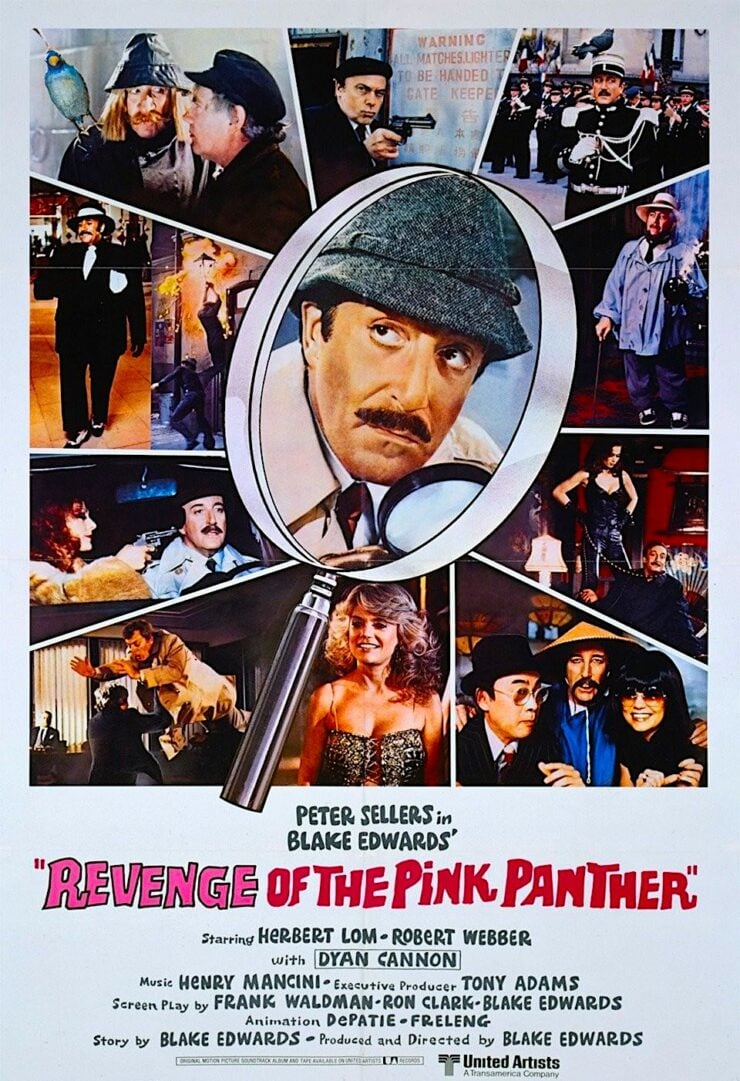

The options list when ordering a Sheer Rover was extensive, you could opt for a six-wheeled version with a stretched body, a convertible, or the more common version which retained its original body, roof, and four wheels but added a new front end and a slew of luxury upgrades to the interior.
A number of different front end treatments were available, but the most famous became the black slotted grill which was canted back slightly, covering the headlights and creating a unique face for the vehicle. Buyers could chose from the standard list of luxuries including leather, carpeting, wood trim, air conditioning, stereo systems, and even portable car phones.
It’s not known exactly how many examples of the Wood & Pickett Sheer Rover were made or how many have survived. We do occasionally see them come up for sale, typically needing a full restoration, and it seems that the wider automotive community hasn’t really discovered them yet, not en masse anyway.
The 1977 Wood & Pickett Sheer Rover Shown Here
The 1977 Wood & Pickett Sheer Rover you see here was ordered new by Peter Sellers, one of the best-loved comedians and actors of his time remembered today for his role of Chief Inspector Clouseau in The Pink Panther series.
Sellers was an avowed lover of cars which included a Porsche 930, an Aston Martin DB4 GT, a Ferrari 500 Superfast, a Rolls-Royce Phantom V, Lamborghini Miura, and the car you see here – a Range Rover that was modified for him by Wood & Pickett.
The vehicle cost him the approximate equivalent to £160,000 (~$208,000 USD) in today’s equivalent, roughly double the price of a brand new Range Rover at the time. He had it delivered to his home in Switzerland and he owned it for three years before it was sold via an advertisement in The Daily Telegraph in 1980. It was possibly sold by his estate posthumously, as Sellers died on the 24th of July 1980.


Amazingly the vehicle is still owned by the family of the man who saw that ad and bought it from Sellers’ ownership. It’s spent the past few decades in garage storage, and as a result it now needs a full restoration to bring it back to its former glory.
The vehicle is being offered for sale on The Market by Bonhams with an estimated value of £10,000 – £15,000 or approximately $13,000 USD – $19,500 USD. If you’d like to read more about its or register to bid you can visit the listing here.
Images courtesy of The Market by Bonhams
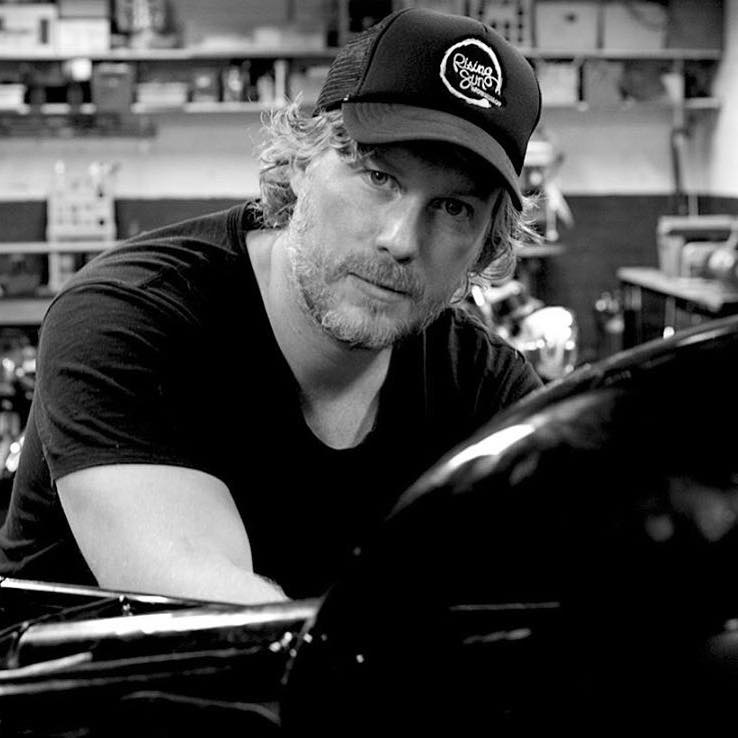
Articles that Ben has written have been covered on CNN, Popular Mechanics, Smithsonian Magazine, Road & Track Magazine, the official Pinterest blog, the official eBay Motors blog, BuzzFeed, Autoweek Magazine, Wired Magazine, Autoblog, Gear Patrol, Jalopnik, The Verge, and many more.
Silodrome was founded by Ben back in 2010, in the years since the site has grown to become a world leader in the alternative and vintage motoring sector, with well over a million monthly readers from around the world and many hundreds of thousands of followers on social media.
Credit: Source link
